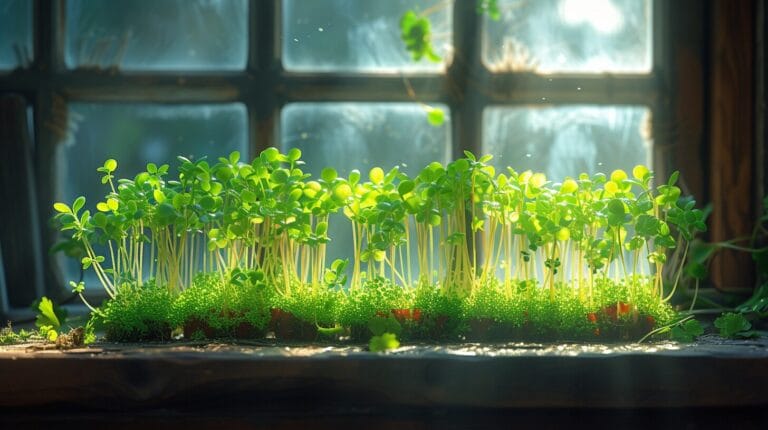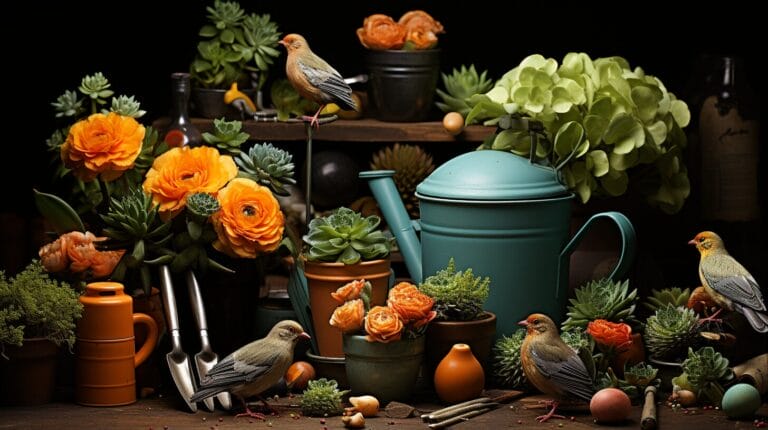How to Trim Lucky Bamboo Plant: Expert Methods for Pruning Success in 2024
As we explore the practice of trimming Lucky Bamboo plants, we discover the importance of accurate three trims and the use of fine blades for effective growth manipulation. Improve the wellbeing of your Lucky Bamboo plants by honing your trim skills using the methods presented here, which facilitates vivid growth. Let’s achieve triumph in trimming by the year 2024 collectively!
Key Takeaways
- Regular trimming is crucial for the health and longevity of Lucky Bamboo, underlining the significance of a detailed care guide.
- Use sharp pruners and cut at a 45-degree angle for precise, clean cuts.
- Aim to trim for aesthetics, promote bushier growth, and ensure overall plant health.
- Propagate trimmed stalks to cultivate new Lucky Bamboo plants, maintaining consistent care for success and using a suitable vase for each new cutting.
Understanding the Basics of Lucky Bamboo Plant Care

For a thriving Lucky Bamboo plant, regular pruning is key to managing growth and encouraging new development. Essential care tips include using filtered water, changing it every 2-4 weeks, providing indirect sunlight, and avoiding over or underwatering.
By following these practices, your Lucky Bamboo can flourish, emphasizing the importance of a comprehensive care guide.
Mastering the Art of Trimming Lucky Bamboo Plants

Trimming Lucky Bamboo requires sharp pruning shears for clean cuts, promoting quick healing and minimizing damage to the lucky bamboo stalk. Before starting, sanitize your shears to prevent disease spread, a crucial step in the care for lucky bamboo.
Identify areas requiring pruning, such as overgrown stems or yellowing leaves. Make precise cuts at a 45-degree angle above nodes to encourage new growth, and consider rooting trimmed stems in water for new plant propagation.
How to Prune Lucky Bamboo for Aesthetics and Health

Pruning Lucky Bamboo not only enhances its appearance but also its health, as removing parts that turn yellow can prevent disease. Following specific methods ensures the plant’s vitality and beauty:
- Trim Leggy Growth: Control excessive stem length to encourage a bushier, more compact form as part of your lucky bamboo care routine.
- Shape Maintenance: Regular pruning maintains the desired plant shape, improving overall aesthetics.
- Healthy Pruning: Post-trimming, avoid direct sunlight to prevent stress and promote recovery, ideally placing the plant in a vase in a well-lit area without direct sun.
- Watering Routine: Consistent water quality and level support root health and nutrient uptake, making tap water a feasible choice if properly treated for Lucky Bamboo.
- Avoid Over-pruning: Moderate trimming of lucky bamboo leaves is necessary to prevent weakening or stunting the plant’s growth.
Propagating Lucky Bamboo: From Cutting to New Plant

Select a healthy stem for propagation, ensuring it’s disease-free for the best chance of success, a key aspect of lucky bamboo care. Trim just below a node with clean, sharp scissors or pruners to trim lucky bamboo leaves, and decide whether to root the cutting in water or soil.
Regular pruning of the new plant encourages healthy growth, trimming away yellowing or damaged lucky bamboo leaves to promote denser foliage, and using a suitable fertilizer can enhance its vigor.
Can the Pruning Methods for Lucky Bamboo Plants be Applied to Tiger Lily and Blue Lily Flowers?
When it comes to caring for plants, it’s essential to understand their unique needs. While pruning methods for lucky bamboo can’t simply be applied to embrace tiger lily and blue lily flowers, the principles of pruning to encourage growth and remove dead or damaged portions can be beneficial to all three plants.
Repotting and Root Care for Your Bamboo Plants

Successful repotting involves choosing a slightly larger pot with drainage holes, trimming unhealthy roots while preserving the healthy root mass, and ensuring proper drainage with a layer of rocks or pebbles at the bottom of the pot.
Use a well-draining potting mix and water thoroughly after repotting to stabilize the plant.
Conclusion
Nurturing our Lucky Bamboo with precision and care promises a thriving indoor garden in 2024. Through expert pruning techniques, we can cultivate lush, vibrant plants that enhance our living spaces.
Dedication and attention to detail will lead us to a successful year of Lucky Bamboo gardening, celebrating the beauty of these elegant plants.
Frequently Asked Questions
What is the best time to trim a lucky bamboo plant?
The best time to trim a lucky bamboo plant is in the spring or early summer when it’s entering its active growing phase.
how to trim lucky bamboo plant?
To trim the roots of a lucky bamboo plant, gently remove the plant from its pot, trim the roots that are brown or mushy, and repot the plant in fresh soil.
Can I use shears to trim my lucky bamboo plant?
Yes, you can use shears to trim your lucky bamboo plant, ensuring you make clean cuts on the stalk for the best health of the dracaena sanderiana. Make sure the shears are sharp and clean to avoid damaging the plant, especially when cutting through the tough bamboo stalks.
How often should I water my lucky bamboo plant after trimming?
After trimming your lucky bamboo, water as needed to keep soil moist but not waterlogged. Consider adding diluted fertilizer for growth. Avoid overwatering to prevent root rot, a common issue if vase water isn’t changed frequently, emphasizing the need for proper root care.
Should I place my trimmed lucky bamboo plant in direct sunlight?
No, lucky bamboo plants prefer indirect light, so it’s best to place your trimmed plant in a vase where it can receive filtered sunlight.







